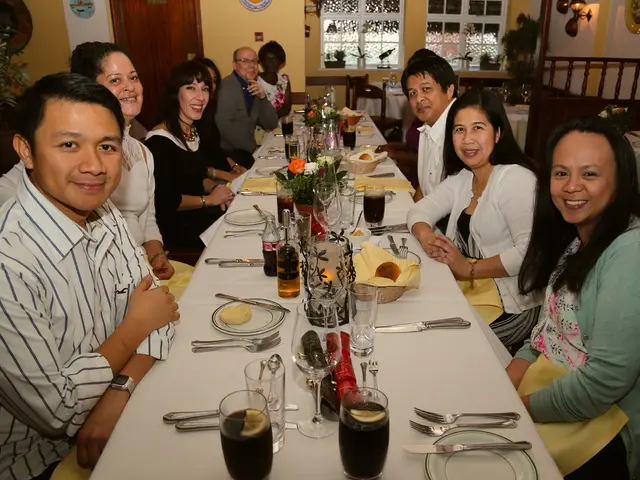Double Lung Transplant Offers Hope for Cancer Patients Close to Giving Up
Woman successfully undergoes innovative double-lung transplant, showing no signs of cancer post-surgery (German national)
Trapped in the grim embrace of stage 3 lung cancer and running out of options, Cornelia Tischmacher, a Berlin art dealer and historian, saw her probability of survival plummet. Diagnosed just eight months after giving birth to twins, she valiantly battled the disease with surgery and chemotherapy – yet her cancer was relentless.
By summer 2024, her lungs were failing, and an oxygen tank was her primary means of breathing. The prognosis for this vibrant, nonsmoking woman was bleak.
But then an unconventional glimmer of hope appeared on the horizon: the DREAM (Double Lung Transplant Registry Aimed for Lung-Limited Malignancies) program at Northwestern Medicine in Chicago. This pioneering initiative established a novel method for double-lung transplants for patients with advanced cancers restricted to the lungs. Gathered around the idea that the standard approach - transplanting lungs one-at-a-time - allowed time for cancer to spread, the surgical team at Northwestern surmised that removing both cancerous lungs at once, cleansing the airways and chest cavity, and then implanting new lungs would be the way forward.
"My instinct was, 'Of course I want to try it… if this is the only option in the world,'" Tischmacher recalled. In a desperate situation, she was prepared to test this pioneering technique, even though the unknown gnawed at her.
On the cold winter's day in December 2024, Tischmacher boarded a plane to Chicago, a city she had never visited, to undergo her life-altering surgery.
Incredibly, her new lungs allowed her to breathe freely for the first time in what felt like an eternity. Fast forward to May 2025, Tischmacher's health is steadily improving, and the once-invasive presence of cancer has been vanquished.
The extraordinary success of her double-lung transplant underscores the potential for this procedure to revolutionize the options available for certain cancer sufferers heading toward their final days. About 70 people have undergone the procedure since the DREAM program's inception three years ago, and although five have seen their cancers return, their tracks have been arrested, and treatment cycles have been reactivated.
Torn between staying near her medical team in the United States or returning to Berlin, Tischmacher will reside in America for one more year; her children visiting for the first time this April proved an emotional and heartwarming experience.
The future of such game-changing therapies is engagingly anticipatory. Tischmacher's surgery was not just her ticket to life but the start of a possible new chapter for thousands like her.
Related
- Woman born without a viable uterus gives birth after UK's first womb transplant
- European patients begin receiving world's first lung cancer vaccine in 'revolutionary' new trial
- How European countries compare on cancer screening programmes
- What scientists learned from the world's first genetically modified pig liver transplant
- Lung Transplant Waitlist and Statistics
- Donor Shortage and Availability for Organ Transplants
- Cornelia Tischmacher's battle with stage 3 lung cancer led to a desperate prioritization of her health and wellness, with the prospect of a double lung transplant offering a glimmer of hope.
- The DREAM program at Northwestern Medicine, which performs double-lung transplants for patients with advanced lung-limited malignancies, is a testament to the transformative role science can play in the medical-conditions arena.
- Though the return of cancer is a risk associated with double lung transplants, as witnessed in five out of the 70 cases since the DREAM program began, the treatment cycles can be reactivated to address the issue.
- The success of Tischmacher's double-lung transplant not only signified a new lease on life for her but also underscored the potential for this procedure to revolutionize treatment options for countless other cancer patients.





